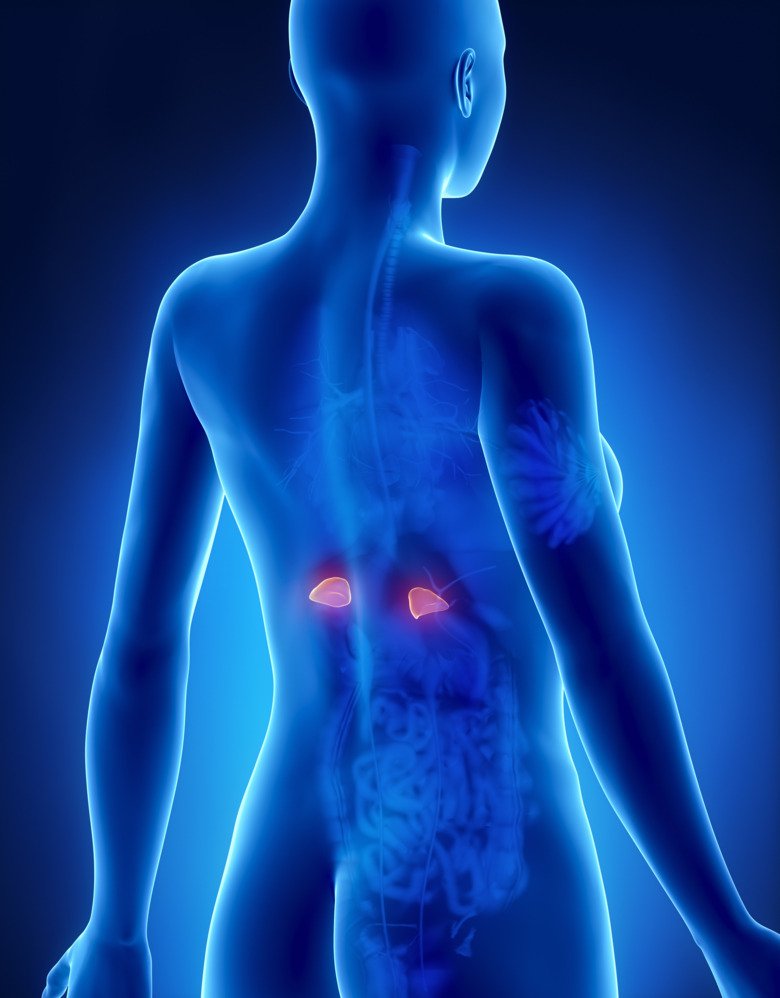When the body attacks itself
In a number of diseases, the body is its own enemy – its own immune system attacks its own tissue. But why does the body do that? And what do these diseases have in common? Meet some of the researchers who are seeking answers about autoimmunity.
Text: Annika Lund, first published in Swedish in the magazine Medicinsk Vetenskap nr 4/2020.
There are about 80 autoimmune diseases. Many are very rare, but some are common diseases. These include, for example, gluten intolerance (celiac disease) and autoimmune thyroid disease, with which an estimated two and two to three per cent of Swedes live, respectively. Together with rheumatism, type 1 diabetes and multiple sclerosis (MS), autoimmune diseases are something that affects quite a few people. So the question is: Why does it seem so common that what is supposed to protect us instead causes harm? Why do so many of us seem to have negligent immune systems?

Fredrik Piehl, professor of neurology at CMM, the centre for molecular medicine at Karolinska Institutet, sees things differently.
“That's a common reaction from my patients, that they feel somehow let down by their immune system. Then I usually answer that from an evolutionary perspective it is the infectious diseases that have killed us, not MS or rheumatoid arthritis. Evolution has favoured a highly reactive immune system, which would rather condemn than acquit. Genes that provide a very awake and reactive immune system are therefore good genes, which have helped us survive,” says Fredrik Piehl.
There are a whole range of genes associated with such a highly reactive immune system, Fredrik Piehl explains. Particularly relevant are those associated with HLA, a molecule found on the surface of virtually all cells in the body. This molecule is tasked with exposing the cell's interior to passing actors from the immune system. If the cell is healthy, snippets of proteins associated with a healthy function appear. But if the cell contains something that should not be in the body, like a virus, then the HLA molecule will show up protein snippets that reveal this. In this way, infection becomes exposed to immune system cells as in a shop window. They will then react – they will start a chain of events that ends with the unwanted cell being attacked. The same fate will befall other cells that display the same protein section.
Variants of HLA
There are many types of HLA. Some of these variants are associated with different autoimmune diseases. It is something that all autoimmune diseases seem to have in common – they can be linked to different variants of HLA.
But HLA is only one of many pieces of the puzzle. How the cells in the immune system behave is another. The so-called T cells are very important in the body's immune system and can be trained to a variety of tasks. For example, T cells can have a communicating function and have an effect on other cells in the immune system. They may also have the task of remembering what previous infections looked like, so that it is possible to mobilise a defence quickly if the infection comes back. They can also attack unwelcome cells themselves – or have an almost policing function. Some T cells, the regulatory T cells, Tregs, are tasked with going after immune cells that make mistakes and react to their own tissue.
It is in the thymus, which lies just above the heart, that the T cells are drilled in their various functions. It is usually likened to the T cells going to school in the thymus, where they are sent after being formed in the bone marrow. In the first stage, their ability is tested. They should be able to recognise, or bind to, HLA, which is necessary for them to understand what a cell tells about its inside. T cells that cannot manage this are killed. The rest go further in their training. They are then exposed to a large quantity of protein sections belonging to what should be in the body, to cells that should be left alone. T cells that react to their own tissue are sorted out. Only T cells that pass both tests are released into the body from the thymus.
Fredrik Piehl tells us that something that seems to unite all autoimmune diseases is that something has gone wrong in this triad of functions. Something in the interaction between HLA, what is displayed on the surface of the cell and which T cells are allowed to graduate has gone wrong. The result is that some T cells attack cells that should be allowed to remain while the Treg cells are too passive and allow the destruction.
Takes more
But it takes more than this for an autoimmune chain of events to begin. It requires some kind of environmental effect, something that awakens or interferes with the immune system. There are many such environmental factors that are suspected of triggering autoimmune diseases – although, these vary from disease to disease. But several diseases have smoking as a common risk factor. The immune system is awakened by foreign substances in the lungs. Exposure to toxins or solvents are other triggers that are being examined. And then there's viral disease.
Viruses are suspected to be triggers of a range of autoimmune diseases. For example, studies have shown that virtually all people with MS have had an infection of the Epstein-Barr virus, EBV, which can cause glandular fever – but very many people without MS have also had EBV. In rheumatology too, EBV infection has been discussed as a possible start button, alongside other viruses such as cytomegalovirus, which is also part of the herpes family. In the case of type 1 diabetes, the so-called coxsackie virus, which can cause common colds but also more serious infections, has been strongly suspected to be a trigger for some patients.
But how this would happen is not known. What is called cross-reactivity is something that is often discussed. Briefly, this means that what some cells show on the HLA molecule is confusingly like something that other cells show up, even though these are different proteins being signposted. Because it is not whole proteins that are presented on the HLA molecule, but only fragments.
Molecular mimicry
So the idea is this: A cell infected with EBV virus shows a protein snippet in the HLA molecule that indicates the infection and awakens the body's defence mechanisms. At the same time, another cell, which is healthy and beneficial, shows a protein snippet in its HLA molecule to indicate this. If these protein fragments are extremely similar, the T cells can be confused and attack both cells – and all the others that show the same thing. They will thus attack a large number of cells infected with EBV and a large number of cells that flag up the confusingly similar protein snippet. This principle is called molecular mimicry.
But this is only a hypothesis. There is no evidence that viral infections could trigger autoimmune disease in this way.

"This is a popular and in many ways attractive explanation. And the idea has been around for a long time. Unfortunately, we have not gone as far as to prove it. In the vast majority of cases of autoimmunity, there is no explanation for what has triggered the disease,” says Nils Landegren, doctor and researcher at CMM at Karolinska Institutet.
His research area is about trying to understand mechanisms and improve diagnostics in various autoimmune diseases. But he explains that really there are few diseases that can be fully proven to be autoimmune. This is partly because in many cases there is a lack of knowledge about exactly what the body is actually attacking, exactly what protein is being aimed at. This applies, for example, to MS, but to many other diseases as well. And even in cases where it can be seen that autoimmune attacks are taking place, it is difficult to prove that they actually cause the disease.
"Then you have to put the puzzle together. Co-heredity with other autoimmune conditions, HLA association and a favourable response to immunomodulatory treatment are things that suggest that a disease is autoimmune, but this is not in itself proof,” says Nils Landegren.
In addition, there is something that is very typical of autoimmune diseases – the formation of autoantibodies. These are antibodies that bind to the body's own protein.
So – what does an antibody actually do? Normally, when the body is attacked by a viral infection, the immune system hinders the virus in two ways, with B and T cells working together. One task for the B cells is to form antibodies against the virus. The antibodies adhere to the virus, which is then hindered in two ways: it can no longer bind to cells, because the antibody is in the way, and it has been given a signal flag, so that other immune cells understand that it should be attacked. In parallel, T cells are formed and find cells where the virus has been hiding so as to kill them. This dual defence, in which antibodies and T cells have the same target in sight, will kill both viruses floating in the bloodstream and cells that have been infected by viruses.
According to research hypotheses, a corresponding process is believed to occur in autoimmune disease: the immune system develops antibodies against the body's own substances, known as autoantibodies. At the same time, T cells attack cells where these substances are located.
Disease-causing autoantibodies
There are diseases where the autoantibodies themselves are directly pathogenic. One such disease is Graves' disease. In this, the autoantibodies bind to a receptor on the surface of cells in the thyroid gland and cause them to overproduce thyroid hormones. Children who are born to mothers who have Graves’ disease have symptoms of the disease for a period of time, as they are affected by the autoantibodies passed over from the mother.
But in many cases, the autoantibodies are directed at proteins that are found inside the cells. Type 1 diabetes is an example of such a disease. In these cases, there is no evidence that the autoantibodies may be harmful in themselves. For example, children born to mothers who have type 1 diabetes do not have symptoms of the disease, even though they receive autoantibodies relevant to the disease transferred from the mother. In these diseases, where the autoantibodies cannot be proved to be harmful, the T cells are thought to cause tissue damage.
But in all cases, whether the autoantibodies cause disease or not, they are valuable and useful markers of disease. Today, a wide range of autoantibodies are routinely used in healthcare to diagnose various autoimmune diseases.
For example, with type 1 diabetes, there are autoantibodies against an enzyme called GAD65, which is found in insulin-producing cells. Autoantibodies have also been identified for celiac disease, thyroid disease and Addison's disease. With rheumatoid arthritis, a number of relevant autoantibodies have been described and with the systemic diseases, such as SLE, over a hundred autoantibodies are known. These are just a few examples. There are many more.
Biological medicines
Over the past two decades, a wide range of so-called biological medicines have reached the market. These are medicines with different targets in the immune system. The cells that are found there, such as different types of T and B cells and macrophages, are in close and rapid communication with each other. Roughly simplified, it can be said that the new immunological drugs break this communication in different ways and cut chains of events within the immune system; when the message relay is not passed on from some immune cells to others, then the activity decreases. In rheumatology, for example, there are what are known as TNF inhibitors, which block a signal substance that the immune system uses for internal communication.
Another example is rituximab, which is used for the treatment of several autoimmune diseases. This medicine knocks out B cells, which is a tangible intervention in the immunological chains.
In MS and rheumatic diseases, today's treatment is about slowing down the autoimmune attack as quickly as possible. The message from researchers to the medical profession is to be generous with the new generation of immunosuppressive medicines – of course, always after individual assessment of disease activity.
Early detection of rheumatoid arthritis
Anca Catrina (1971-2021), professor of rheumatology at the Department of Medicine and at CMM Karolinska Institutet in Solna, is researching early detection of rheumatoid arthritis. The goal is to help people at risk to avoid getting the disease. Because there are a number of signs that someone is at risk of rheumatoid arthritis. One is that the patient has pain in the joints. Another is that the patient has developed autoantibodies specific to rheumatoid arthritis. Thus, there are signs of disease even before it is possible to detect inflammation of the joints.

"We have shown in previous studies that autoantibodies can be measured in the blood as early as ten to fifteen years before the disease breaks out. So there is an ongoing immune activation long before the disease breaks out," says Anca Catrina.
In Stockholm and in several other places in the country there is now a procedure to identify these people. Those who have joint pain and certain autoantibodies in the blood can be referred from primary care to a rheumatologist. This is nothing new. What is new is that rheumatologists do not send patients back to primary care in cases where the joints are found to be free of inflammation. Instead, the rheumatologist keeps patients for two to three years. Those who need it receive lifestyle advice on smoking, exercise and diet. Those who develop disease receive treatment. Those who remain healthy are sent back to primary care, but only after a few years.
"Today we have about 400 people whom we are following in this monitoring programme. We have seen that the risk of developing the disease is highest in the first six months after the detection of autoantibodies and pain in the joints. After this, the risk recedes," says Anca Catrina.
It is thus beneficial for the prognosis to give aggressive treatment early with rheumatoid arthritis. This procedure is one way to achieve this. But could you treat even earlier, and prevent the disease from breaking out at all?
Anca Catrina says that this is probably the case. However, which patients should receive such treatment is difficult to say clearly today. But by studying these high-risk individuals, it is hopefully possible to get a clearer answer.

The researchers have access to a number of inflammation markers and autoantibodies from this population and their clinical significance is being studied in mice and in cell cultures. The researchers are also collecting a quantity of self-reported data from patients, via questionnaires on different habits. Patients are then followed over time, so that it is possible to identify what characterises those who develop the disease.
The vision is to successfully identify those at highest risk of developing rheumatoid arthritis and treating them so early that the disease does not break out.
"There are already ongoing studies on this, both here and in other countries. Within the framework of a study, we provide treatment to certain people who are at high risk of developing rheumatoid arthritis. It is medicines for osteoporosis that we give, medicines that reduce the breakdown of bones. The hope is that they will be able to remain healthy," says Anca Catrina.
Organ-specific diseases
A great deal of autoimmunity behaves completely differently from MS and the rheumatic diseases do. These are known as organ-specific diseases, where the immune system makes a distinct attack on a specific type of cell, such as insulin-producing cells. Those cells are then irreparably lost. After the attack, the immune system spontaneously calms down. Often these organ-specific diseases are detected late in the process, when there are so few cells left that attacked organs no longer function.
Several such diseases are found in endocrinology, which has to do with hormones. Some examples are type 1 diabetes, thyroid disease and Addison's disease. Today's treatment of these diseases is largely about the patient taking medicines that contain or replace the hormones that the body can no longer produce, i.e. insulin, thyroid hormone, cortisol and aldosterone.

Individualising the treatment
Sophie Bensing, clinical endocrinologist and associate professor at the Department of Molecular Medicine and Surgery at Karolinska Institutet, says that knowledge of Addison's disease has made great progress recently.
"In the past, we barely managed to find these people and we gave standardised treatment, but not so much more. Now we have become much more active in individualising the treatment and training patients in self-care. They should be aware of their illness, know what to do to avoid cortisol insufficiency and they should have a good quality of life. We strive to ensure that patients are not limited more than is necessary in their lives," she says.
Normally, cortisol levels fluctuate significantly over the course of the day. They are very high in the morning and very low when we sleep. Achieving this with tablets is a challenge, especially as levels normally rise before we wake up. Also, the need for cortisol increases with infections and bodily trauma, such as injuries and surgery. Those who live with Addison's disease need to take tablets frequently, perhaps two or three times a day, and increase the dose if necessary, as in the case of fever. Otherwise, the sequence of events could be dramatic. Acute cortisol insufficiency can be fatal. In the event of acute cortisol insufficiency, the person must immediately receive cortisone, intramuscularly or intravenously, as well as a saline drip.
"We have spent a great deal of time spreading this message, among patients and healthcare professionals. We have worked together with the patients' association. Among other things, we have developed a warning card with information, which people with Addison's disease can always carry with them," says Sophie Bensing.
A number of things have also been found that can be done to improve the lives of people with Addison's disease. In parallel, however, a register and a biobank have been built up, with blood samples and information from over 1,000 people. It is the world's largest biobank with purely Addison samples. The Norwegian equivalent is almost as large. The collaboration between researchers in these countries is good, which gives an outstanding position for Addison research in the Nordic countries.
Unanswered questions
And there are lots of unanswered questions about the disease. Two variants are caused by underlying syndromes, called APS-1 and APS-2. In by far the most common group, APS-2, there is an increased risk of thyroid disease, type 1 diabetes and celiac disease, among other things. The uncommon variant, APS-1, is associated with an increased risk of, for example, chronic yeast infection and reduced function of the parathyroid glands. But even after doctors have sorted out what variant of autoimmune Addison a patient has (and thus what risks of another disease exist), it is not possible today to say who will develop further autoimmune manifestations – or who will avoid these. However, it is known that about half of people with autoimmune Addison will have some other autoimmunity. Therefore, when today's patients go for an annual check-up, they are now routinely screened for a number of other autoimmune diseases.

A very recent discovery about Addison's disease is that a number of patients have some function left in the adrenal cortex. In a study in which the Swedish group participated, published in the summer of 2020, approximately one in three of almost 200 people with autoimmune Addison had residual function, sometimes several decades after diagnosis. This patient group is of course very interesting for the researchers. Has a piece of the adrenal cortex actually managed to survive? Or have the cells been recreated? What does the immune system of these people look like compared to others, without residual function? Has the autoimmune attack been interrupted? It is not possible to say today, but it is possible to unravel issues such as these via the biobank.
Sophie Bensing explains that an English team of researchers have tried giving newly ill patients the medicine rituximab. The goal is to slow down the autoimmune attack. Some retained residual function might affect the dose of cortisone these patients need.
"It would be a great step forward if we could identify which people are at risk of which autoimmune diseases. Then we could be more precise in our monitoring. The bigger objective would be to be able to give preventive treatment, so that no new disease breaks out. But we are still a long way from that,” says Sophie Bensing.
